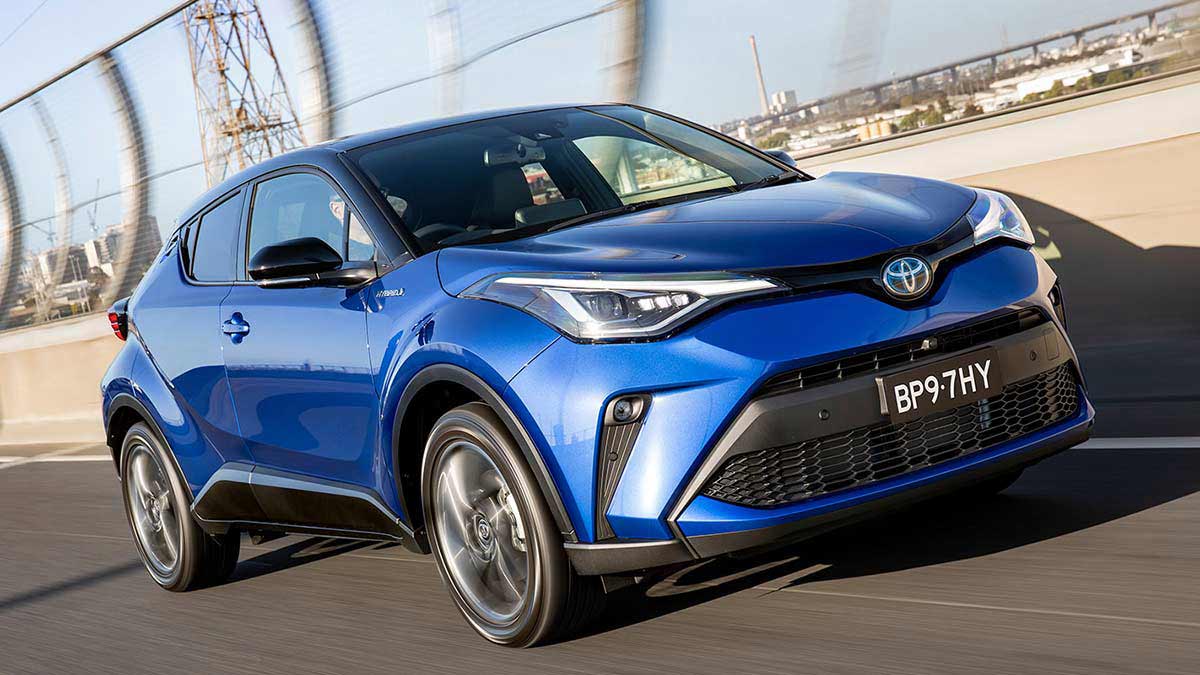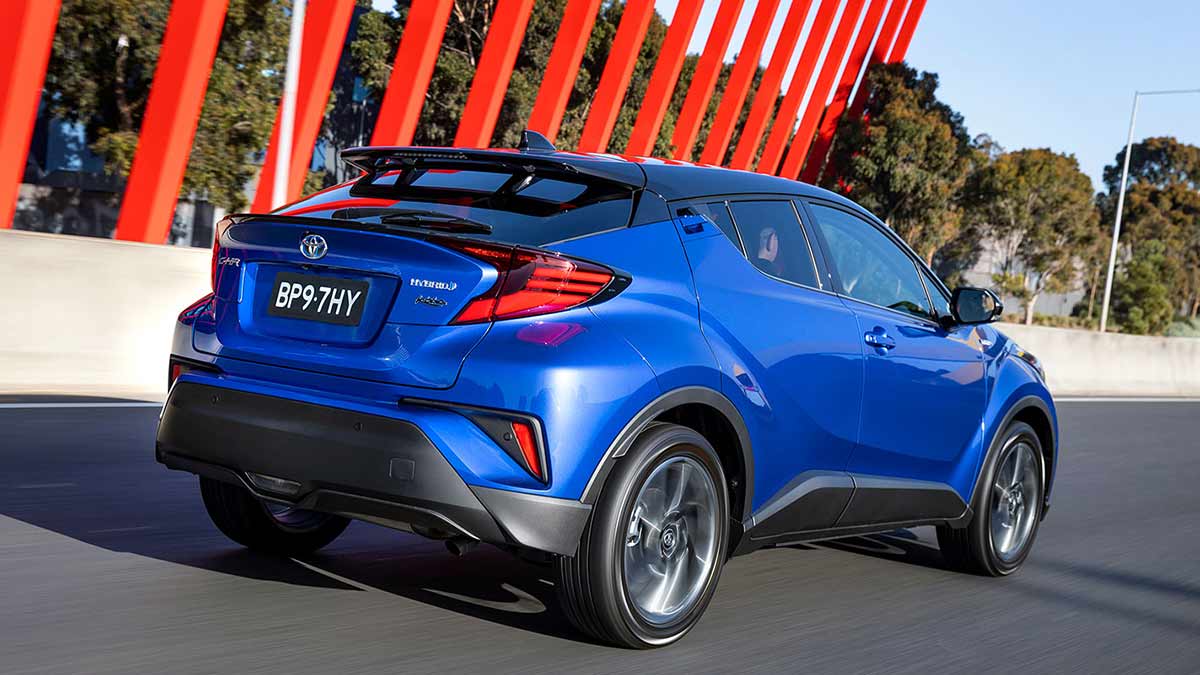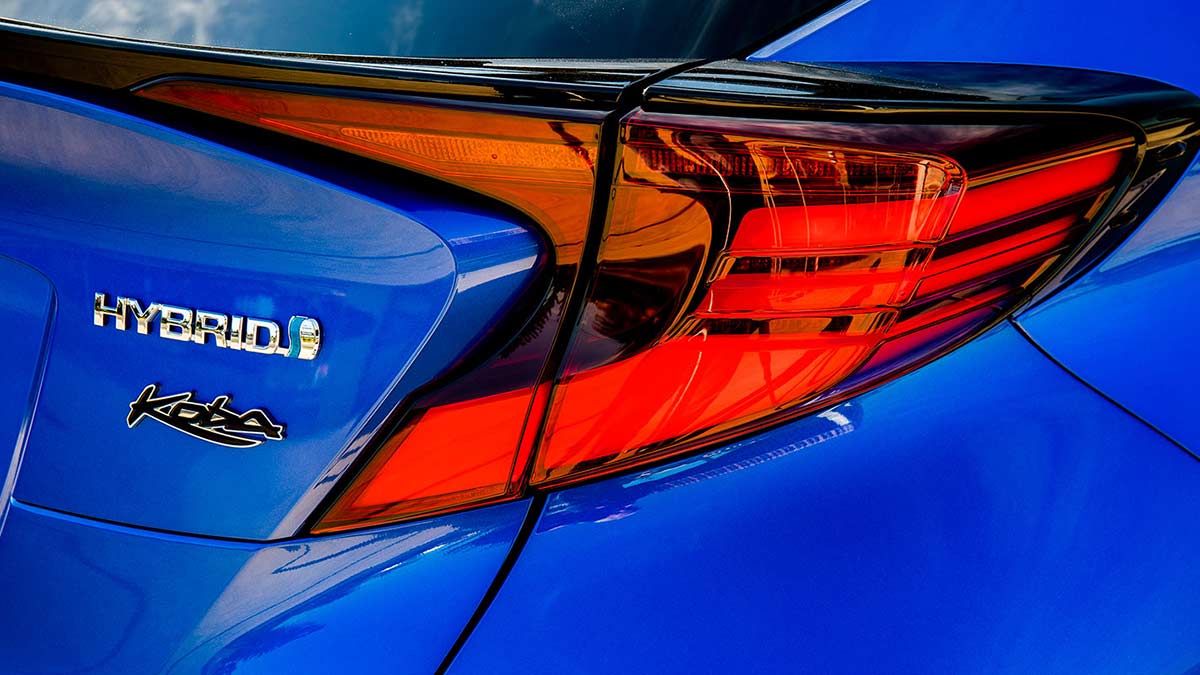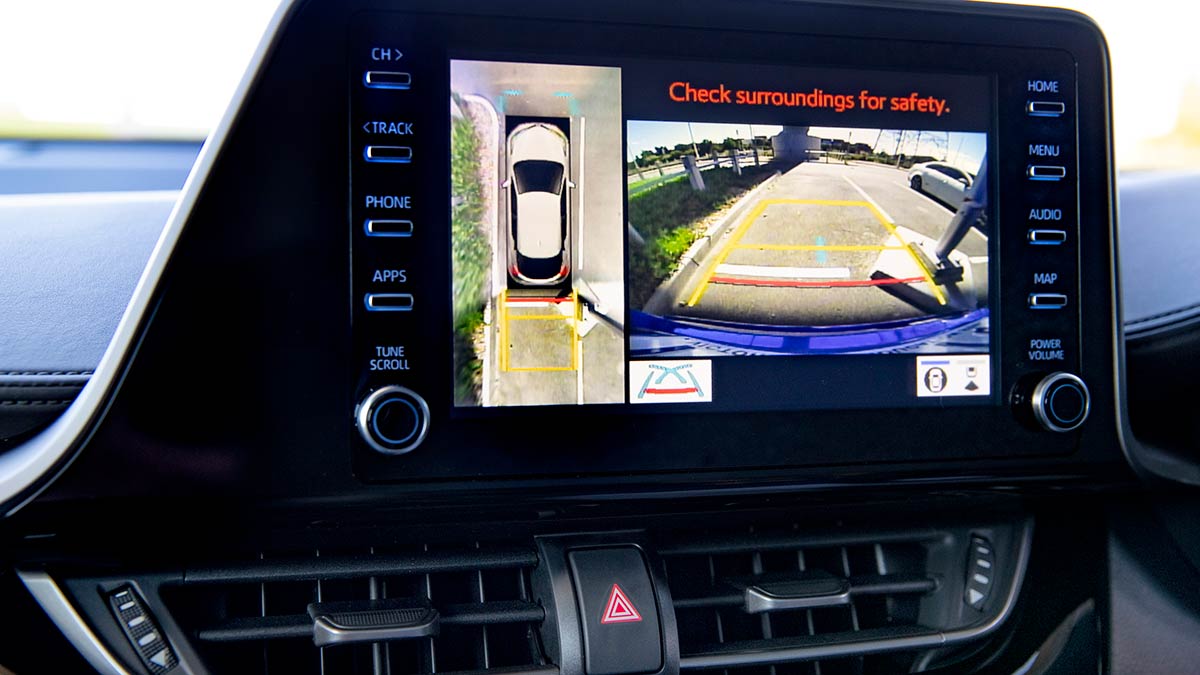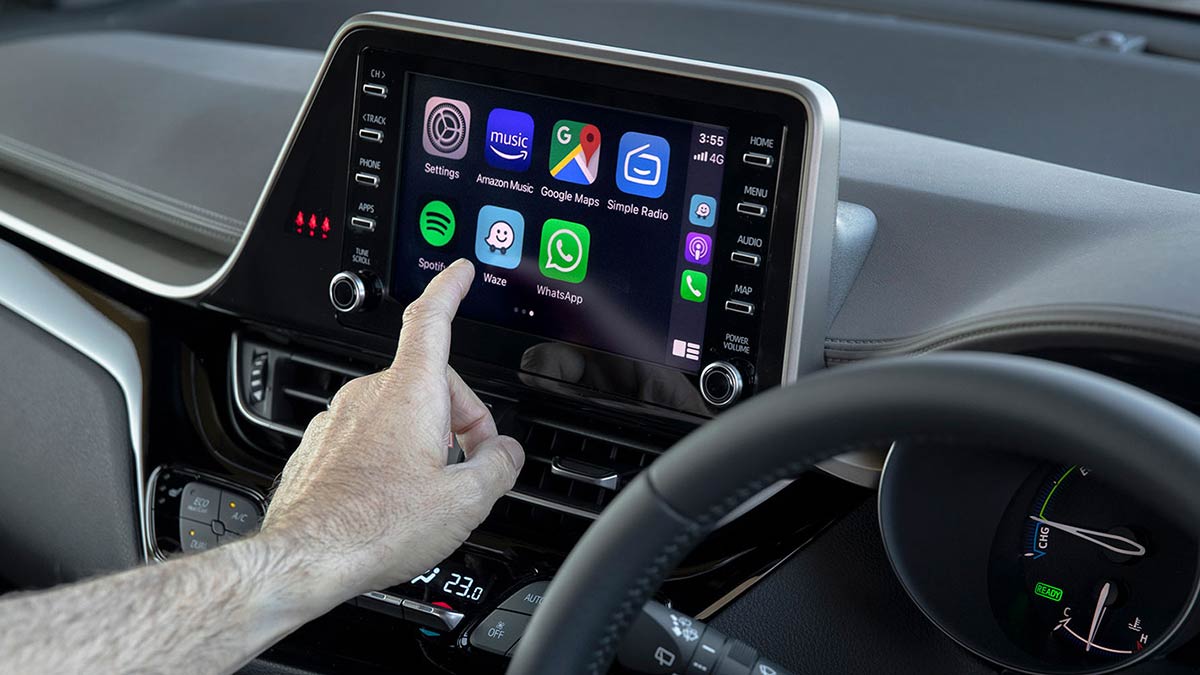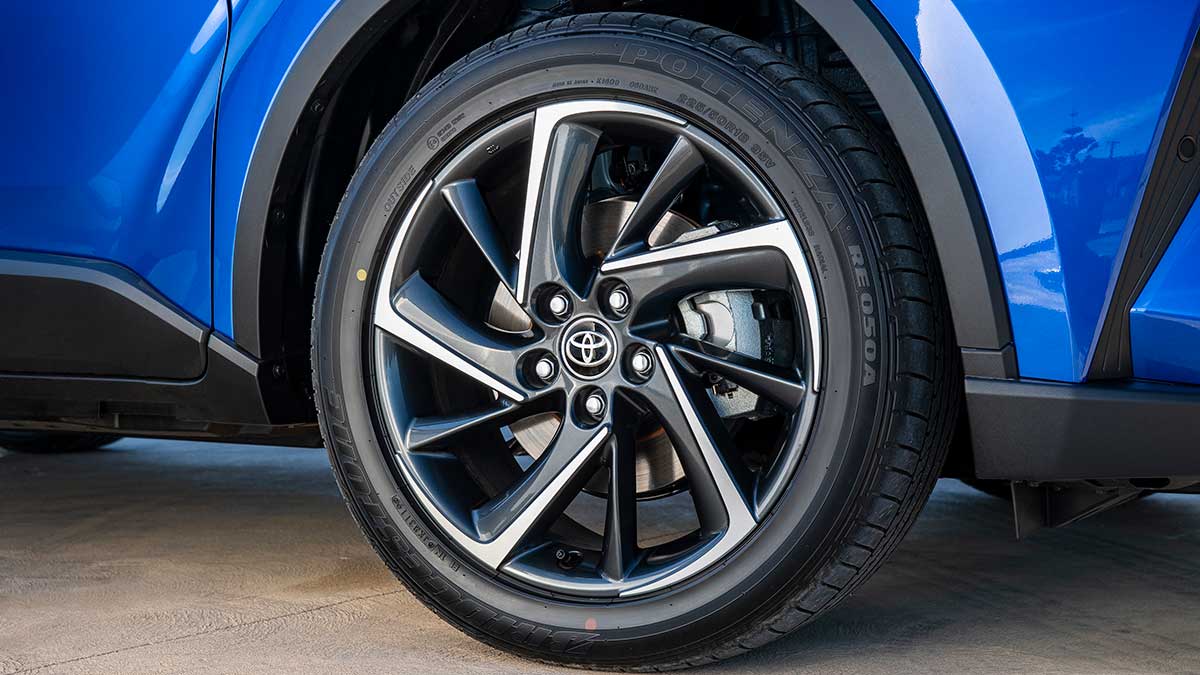The ninth-generation Toyota HiLux has arrived, bringing with it a futuristic forward exterior design, more safety and tech and the same rugged capability owners love. Will the updates tempt private buyers away from the Ford Ranger or are they just enough to keep fleets onside?
Toyota C-HR Hybrid 2020 road test review

Tim Nicholson takes the new Toyota C-HR Hybrid for a road test.
Toyota has been pushing its petrol-electric hybrid technology for more than 20 years but it is only just now gaining mainstream acceptance in Australia. Since the revolutionary first-generation Prius surfaced globally in 1997, Toyota has gradually rolled out its fuel-saving green powertrain tech to many of its key models.
Last year Toyota launched the new-generation RAV4 medium SUV and instead of having a diesel option, it offered it with a petrol-electric powertrain for the first time in Australia. The hybrid RAV4 exceeded Toyota’s sales expectations by some margin and there is still a waitlist nine months on from launch. It came as no surprise when Toyota added hybrid power to its edgy C-HR small SUV as part of a model-year update that rolled out in December. The small hybrid SUV market is small for now, but it will soon expand, with Subaru launching a hybrid XV in the first quarter of 2020.
Thumbs up
Hybrid powertrain is a great match for the C-HR chassis, ensuring it stands out in the busy small-SUV market.
Thumbs down
Some design choices priorities style over functionality, and the brakes are far too sensitive.
The hybrid powertrain is only offered in high-grade Koba specification with front-wheel drive, and at $36,440 before on-road costs, it is the flagship of the C-HR range. This puts it at the pricier end of the small-SUV segment, up against the likes of the Mazda CX-3 Akari LE ($36,450), Hyundai Kona Highlander ($36,000) and Mitsubishi Eclipse Cross Exceed ($36,690). It’s a shame there’s no hybrid option for the entry-level C-HR, particularly given Toyota offers a hybrid in lower-grade versions of the Corolla sedan and hatch.
Despite the lofty price for a small SUV, the C-HR has a competitive level of standard equipment. In fact, the only options are premium paint ($550) and two-tone paint for the Koba ($450). The latest update ushered in a new larger eight-inch touchscreen infotainment system that now includes Apple CarPlay/Android Auto connectivity.
Three years on from its initial launch, the C-HR still has an arresting design. It won’t be to everyone’s taste, but this is the perfect segment to take risks. New LED head and tail-lights from the update keep the C-HR looking fresh.
Some design choices, however, are clearly a matter of style over function. The rear door handles are set so high they are close to the roof and angled in such a way that it’s awkward to open the door. Many children simply won’t be able to reach them. The window line sweeps up so dramatically that the rear windows are tiny, which means rear-seat occupants – even tall ones – will find it difficult to see outside. The second-row seats are comfortable enough and there is adequate leg and head room given the size of the car. There are no second-row air vents and minimal storage, although there are map pockets. It’s fair to say this isn’t the most family-friendly SUV and it’s better suited to singles and couples.
Aside from the gloomy second row, there’s plenty to like inside the C-HR. A cockpit-style cabin and excellent driving position give the C-HR a sportscar vibe. The superb front seats are far more premium than the sticker price suggests. They are the sort of seats you’d get in a hot hatch, with excellent side and hip bolstering and appealing leather-appointed upholstery.
There is a feeling of solidity to the C-HR’s cabin, helped by the quality of materials throughout. The indented triangular design on the door inserts and the use of piano-black plastic panels add to the cool vibe.
The centre stack housing the climate controls and touchscreen is angled towards the driver, which is a thoughtful touch. A central control dial would make the new eight-inch touchscreen more user friendly, and the updated infotainment system is still dated compared with rivals like Mazda, Hyundai and Kia, but it works well and is easy to use.
In terms of storage, the glovebox is shallow, but the central bin is deep. The drink holders in the console are oddly shaped and for some reason are separated – one sits under the climate controls and the other is next to the storage bin. Only small bottles will fit in the door bottle holders.
Rear visibility is severely impacted by the small rear windscreen and enormous C-pillar – be sure to do a head check before you merge because you can lose a whole car in that blind spot.
The 318-litre boot offers more space than the related Corolla Hybrid hatch (217 litres) as well as the Mazda CX-3 (264 litres), but not quite as much as the Hyundai Kona (361 litres). The rear seats fold flat, which helps with loading large items. The C-HR is offered with a temporary spare wheel.
Under the bonnet is a 1.8-litre four-cylinder petrol engine delivering 72kW/142Nm, paired with an electric motor and a nickel-metal hydride battery, producing a total system output of 90kW. That’s 5kW more than the regular C-HR’s 1.2-litre petrol unit.
Toyota’s hybrid system has come a long way since the early days. The C-HR is more responsive than you’d expect, offering decent off-the-mark acceleration. The car’s engine control unit determines when it runs on electric power, but it tends to be at low speeds, with the petrol engine kicking in when the throttle is pushed hard. The transition from electric to petrol propulsion is much smoother than older hybrids. The petrol engine can get a little rowdy when pushed, but the cabin is well insulated from excessive engine and road noise.
The C-HR Hybrid shows its limitations when accelerating up steep hills, as it lacks outright grunt, but it handled overtaking manoeuvres on flat roads with relative ease.
Toyota’s continuously variable transmission is one of the best in the business, lacking the droning noise of other units. The steering feels a little artificial but is relatively direct.
The CH-R’s ride is a little crashy on corrugations and unsealed roads, but comfortable on everyday roads. While it’s no sportscar, the CH-R’s roadholding is impressive. An undulating and twisty bit of road near Broadford highlighted the CH-R’s dynamic capability. It never feels like it will come unstuck, which instils a sense of confidence to the way it handles.
The Toyota’s brakes are overly sensitive, biting far too early even from a light touch of the pedal. However, an emergency braking test manoeuvre proved that the brakes are strong.
The C-HR’s well-calibrated adaptive cruise control makes for smooth deceleration when a car enters the lane ahead. It’s one of the better systems we’ve encountered lately. But the lane-departure warning with steering-assist function is a touch too subtle and doesn’t intervene as noticeably as it does in the Corolla and RAV4.
Toyota’s official fuel consumption figure for the C-HR Hybrid is 4.3 litres per 100 kilometres and after three weeks of mixed country and city driving, we recorded a respectable 5.2L/100km.
The verdict
The C-HR Hybrid benefits from Toyota's rock-solid reliability and hybrid fuel efficieny, and it's entertaining to drive. It is pricey, althought it has plenty of standard gear, but Toyota should consider a more affordable version.
|
Price |
List price: $36,440 plus on-road costs |
|---|---|
|
Drivetrain |
1.8-litre petrol-electric hybrid, continuously variable transmission and front-wheel drive. Power: 90kW Torque: 163Nm Wheels: 225/50 R18 |
|
Fuel |
RON 91 petrol and 43-litre tank Consumption: 5.2L/100 kilometres (RACV test), 4.3L/100 kilometres (government test) Emissions: 97g/km CO2 |
|
Standard safety |
Seven airbags, pre-collision safety system with pedestrian detection, adaptive cruise control, lane-departure alert with steering assist, blind-spot monitor with rear cross-traffic alert, reversing camera, front and rear parking sensors, trailer sway control and hill-start assist. |
|
Standard features |
Keyless entry and start, leather-accented upholstery, heated front seats with power lumbar support for driver, eight-inch colour touchscreen, Apple CarPlay/Android Auto, six-speaker audio, satellite navigation, auto-dimming rear-view mirror and dual-zone climate control. |
|
Warranty |
Five-year/unlimited kilometre warranty, five-year capped-price servicing program. |
